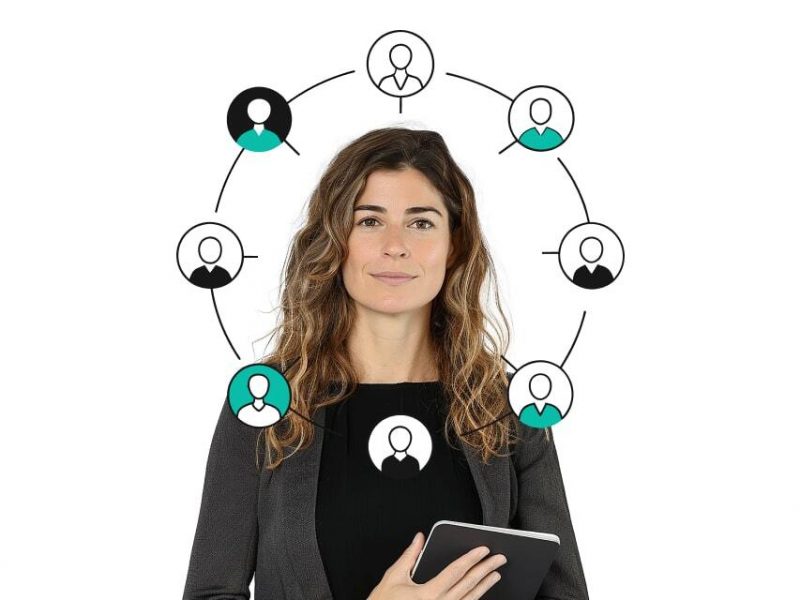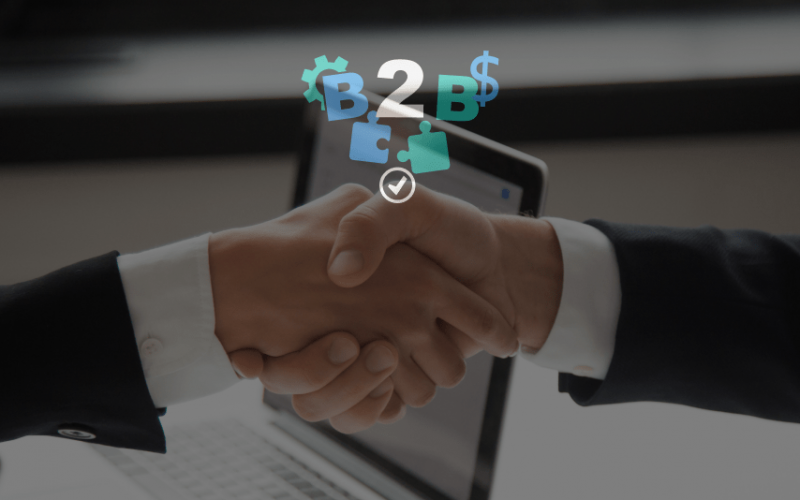In today’s competitive business landscape, where data-driven decision making is crucial, customer personas have emerged as a vital tool for understanding and engaging with target audiences. This comprehensive guide explores how these semi-fictional representations of ideal customers can transform marketing strategies, enhance product development, and ultimately improve a company’s bottom line.
Whether you’re a seasoned marketing professional looking to refine your approach or an entrepreneur eager to delve into consumer psychology, this article will provide valuable insights into the creation and application of customer personas.
What Is a Customer Persona?
A customer persona is a detailed, semi-fictional representation of your target audience, crafted from a combination of market research, data analysis, and real-world observations. It goes beyond basic demographic information to create a comprehensive profile of your ideal customer.
A well-developed customer persona typically includes:
- Demographics: Basic information such as age, gender, income level, education, location, and occupation.
- Psychographics: Values, interests, lifestyle choices, and personality traits.
- Behavior Patterns: Habits, routines, and decision-making processes.
- Motivations and Goals: The driving forces behind the customer’s actions and what they aim to achieve.
- Challenges and Pain Points: Obstacles the customer faces and problems they’re trying to solve.
- Preferred Communication Channels: Where and how the customer prefers to receive information.
- Buying Patterns: How, when, and why the customer makes purchases.
- Influencers and Information Sources: Who or what impacts the customer’s decisions.
By combining these elements, you create a multi-dimensional profile that represents your target market. The strength of a customer persona lies in its ability to transform data into a narrative that resonates across your organization. When executed effectively, a customer persona becomes an invaluable tool for guiding decision-making in various aspects of your business.
Why Are Customer Personas Important?
Customer personas are essential for business success due to their wide-ranging applications and benefits:
Targeted Marketing
Customer personas enable the creation of messages that resonate on a personal level with your audience, leading to higher engagement rates, improved conversions, and better return on investment (ROI).
Informed Product Development
Understanding customers’ needs and challenges allows for the prioritization of features that matter most, identification of market gaps, and reduction of risk in developing products that don’t meet demand.
Enhanced Customer Experience
Detailed personas facilitate the creation of customer journeys that feel personalized and intuitive, from user interfaces to support experiences.
Team Alignment
Personas provide a common language across departments, ensuring cohesion in customer understanding from sales to product development.
Resource Optimization
By focusing efforts on well-defined target audiences, companies can allocate budgets more effectively and improve overall operational efficiency.
Competitive Advantage
Detailed customer insights allow for the identification of underserved segments, development of unique value propositions, and building of stronger customer relationships.
Customer-Centric Decision-Making
Personas provide a framework for making informed decisions at all levels of the organization, from product launches to market expansion strategies.
In essence, customer personas transform abstract data into actionable insights, enabling informed decisions that drive growth, improve customer satisfaction, and ultimately boost the company’s bottom line.
How to Create a Customer Persona
Creating an effective customer persona is a process that combines data analysis, market research, and strategic planning. Here’s a step-by-step guide to crafting customer personas that will enhance your business strategy:
1. Gather and Analyze Data
- Analyze CRM data for demographic information and purchasing patterns
- Review website analytics to understand user behavior and preferences
- Examine social media insights for engagement patterns and interests
- Analyze customer service logs for common issues and feedback
- Utilize tools like Google Analytics, social media insights, and industry reports
2. Conduct Customer Interviews and Surveys
- Conduct Customer Interviews and Surveys
- Perform in-depth interviews with top customers to understand their motivations and challenges
- Create surveys to gather quantitative data on customer preferences and behaviors
- Use open-ended questions to capture qualitative insights
- Include a mix of loyal customers, new customers, and former customers for a comprehensive view
3. Identify Patterns and Segments
- Look for common characteristics, behaviors, and preferences among customers
- Group similar responses and data points
- Identify correlations between different attributes
- Determine distinct segments within the customer base
4. Create Persona Profiles
- Assign a name and visual representation to each persona
- Write a detailed biography including demographics, job title, and family situation
- Describe their goals, both personal and professional
- List their challenges and pain points
- Detail their buying behavior and decision-making process
- Include representative quotes or common sayings
5. Map the Customer Journey
- Outline the typical journey for each persona with your product or service
- Identify how they become aware of your brand
- Detail the steps they take before making a purchase
- Describe how they use your product or service
- Outline their post-purchase experience
6. Validate Your Personas
- Share personas with customer-facing teams for feedback
- Test personas against a sample of actual customers to ensure accuracy
- Use A/B testing in marketing efforts to verify if persona-based messaging resonates
7. Create Persona Documents
- Compile information into easily shareable documents
- Create one-page summaries for each persona
- Develop more detailed profiles for in-depth reference
- Consider creating visual representations like infographics
8. Implement and Educate
- Introduce personas to the organization through workshops
- Explain how each department can utilize the personas
- Encourage teams to refer to personas by name in meetings and discussions
9. Refine and Update Regularly
- Establish a schedule for regular reviews and updates
- Continuously gather feedback from teams using the personas
- Stay informed about market trends and shifts that might affect your personas
Remember, the goal is to create personas that feel like real individuals your team can understand and empathize with. The more vivid and data-driven your personas are, the more effective they’ll be in guiding your business decisions.
How to Use Customer Personas Effectively
Once you’ve developed your customer personas, it’s crucial to integrate them into various aspects of your business operations. Here are strategies for leveraging customer personas to maximum effect:
Content Creation and Marketing
- Tailor blog posts, social media content, and email campaigns to address specific interests and pain points of each persona
- Develop content calendars that ensure regular engagement with each persona’s needs
- Create lead magnets and gated content that provide value to specific personas
- Use persona-specific language and tone in marketing materials
Product Development
- Use persona insights to guide feature prioritization and product improvements
- Create user stories based on personas to guide development sprints
- Conduct user testing with individuals who match persona profiles
- Develop product roadmaps aligned with the evolving needs of key personas
Customer Service and Support
- Train support teams to recognize and empathize with different customer types based on personas
- Develop FAQ documents and knowledge bases tailored to each persona’s common issues and preferred learning styles
- Create persona-specific scripts for handling common support scenarios
- Use persona insights to anticipate potential issues and develop proactive support strategies
Sales Strategy
- Equip sales teams with persona information to better connect with potential customers
- Develop persona-specific sales pitches and objection handling techniques
- Create targeted sales collateral for each persona
- Use persona insights to qualify leads more effectively and personalize follow-up communications
User Experience and Website Design
- Design website navigation and user experience with personas in mind
- Create persona-specific landing pages for different marketing campaigns
- Develop user flows that cater to the preferences and behaviors of each persona
- Use persona insights to inform A/B testing of website elements
Ad Targeting and PPC Campaigns
- Use persona characteristics to create highly targeted ad campaigns on platforms like Facebook, LinkedIn, and Google Ads
- Develop ad copy and creative that addresses each persona’s pain points and aspirations
- Create custom audiences based on persona attributes for more effective ad targeting
- Use persona insights to inform bidding strategies and budget allocation across campaigns
Email Marketing and Automation
- Segment email lists based on persona attributes
- Create persona-specific email nurture sequences
- Personalize email content, subject lines, and send times based on persona preferences
- Develop triggered email campaigns that respond to persona-specific behaviors or milestones
Social Media Strategy
- Choose social media platforms based on where personas spend their time
- Tailor social media voice and content mix to appeal to key personas
- Develop persona-specific social media campaigns and hashtags
- Use persona insights to inform social media advertising strategy
Customer Loyalty and Retention Programs
- Design loyalty programs that offer rewards aligned with persona values and preferences
- Develop persona-specific retention strategies to reduce churn
- Create upsell and cross-sell opportunities based on persona needs and buying patterns
- Implement persona-based win-back campaigns for lapsed customers
Business Strategy and Decision-Making
- Use persona insights to inform high-level business decisions, such as market expansion or new product lines
- Evaluate potential partnerships or acquisitions based on alignment with key personas
- Develop pricing strategies that reflect the value perception and willingness to pay of personas
- Use personas to guide resource allocation across different business units and initiatives
Competitive Analysis
- Evaluate competitors through the lens of personas to identify gaps in the market
- Use persona needs to benchmark offerings against competitors
- Develop competitive positioning statements tailored to each persona
Brand Development
- Align brand voice and messaging with the values and communication styles of key personas
- Develop brand stories that resonate with the aspirations and challenges of personas
- Choose brand partnerships and sponsorships that align with persona’s interests and values
By integrating customer personas into every facet of your business, you create a customer-centric organization that’s better equipped to meet the needs of your target audience, drive growth, and maintain a competitive edge.
Advanced Customer Persona Techniques With Prelaunch
While traditional methods of creating and using customer personas are valuable, advanced tools and techniques are revolutionizing the process, providing deeper, more accurate insights that can significantly enhance marketing and product development strategies. Platforms like Prelaunch are at the forefront of this revolution, offering innovative solutions for concept validation and customer understanding.
1. Dynamic Customer Clustering
- Utilize machine learning algorithms to identify nuanced segments within your customer base
- Benefits include increased accuracy, scalability, and adaptability as your customer base evolves
- Prelaunch’s AI-driven analysis excels at this, creating detailed customer clusters based on real purchase intent data
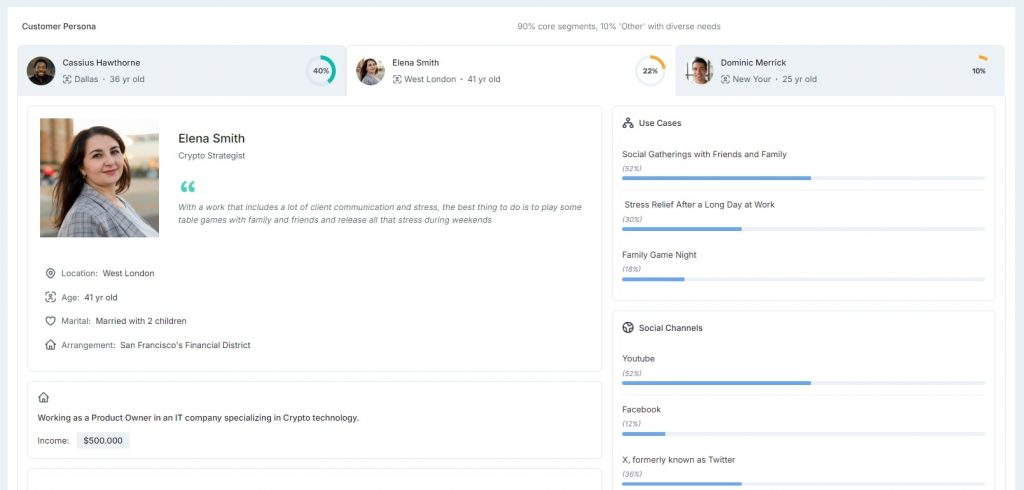
2. Real-Time Data Analysis
- Implement systems that allow personas to evolve as your customer base changes
- Benefits include agile marketing capabilities, improved personalization, and proactive problem-solving
- Prelaunch’s platform offers real-time insights, allowing you to adapt your strategies on the fly based on actual customer feedback

3. Predictive Persona Modeling
- Analyze historical data and current trends to forecast how personas might evolve over time
- Enables businesses to stay ahead of changing customer needs and develop forward-thinking strategies
- With Prelaunch’s continuous data collection from interested buyers, you can spot emerging trends early
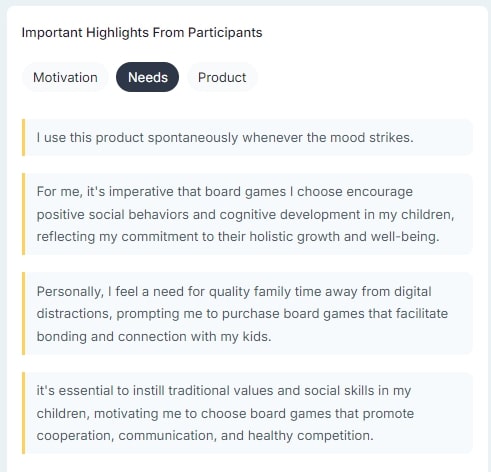
4. Cross-Channel Persona Integration
- Create a unified view of personas across all platforms and touchpoints
- Facilitates consistent messaging, improved customer journey mapping, and more effective attribution modeling
- Prelaunch’s comprehensive approach, including surveys, interviews, and focus groups, provides a holistic view of your customer base
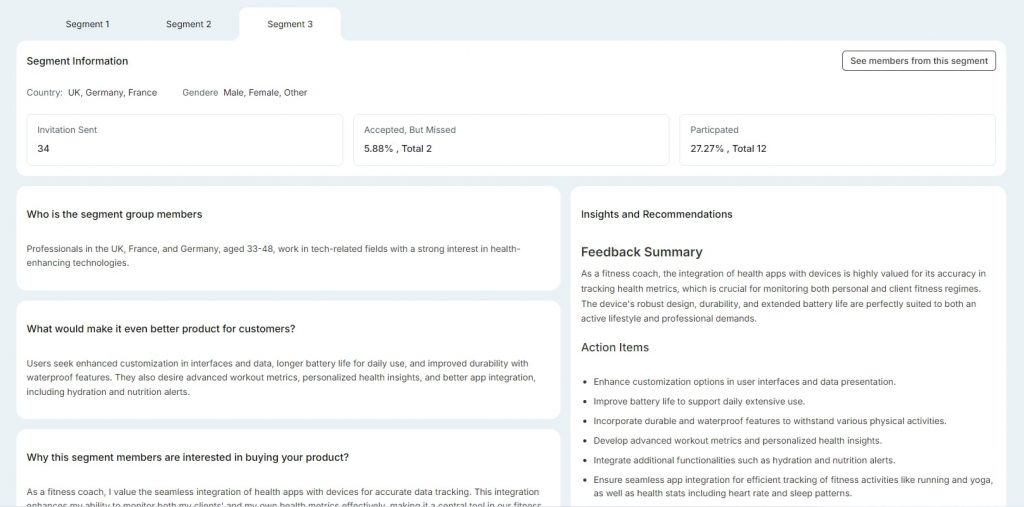
5. AI-Powered Persona Insights
- Leverage artificial intelligence to uncover deep insights about personas
- Can reveal hidden correlations, emerging micro-segments, and unexpected influencers in the buying process
- Prelaunch’s sophisticated AI analyzes large volumes of data, highlighting key aspects for immediate attention and action
By incorporating these advanced techniques, businesses can transform persona creation from a periodic, manual task into an ongoing, data-driven process that keeps them constantly aligned with their audience. Platforms like Prelaunch offer a powerful way to implement these techniques, providing reliable customer insights based on real purchase intent rather than hypothetical scenarios. This approach not only eliminates survey fraud and bias but also ensures that your product development and marketing strategies are built on a foundation of authentic customer data.
Customer Persona Examples
To illustrate the concept of customer personas, consider the following examples. Note that these are simplified versions; actual personas should be more comprehensive and tailored to specific businesses and markets.
Tech-Savvy Professional
- Demographics: 28-year-old female, software developer, $85,000/year, single, lives in a technology hub
- Psychographics: Early adopter, values innovation and efficiency, environmentally conscious
- Goals: Career advancement, staying ahead of tech trends, maintaining work-life balance
- Challenges: Information overload, keeping up with rapidly evolving tech landscape
- Preferred channels: Twitter, tech blogs, podcasts
- Buying behavior: Extensive research, values peer reviews, willing to pay premium for cutting-edge products
Budget-Conscious Manager
- Demographics: 45-year-old male, middle manager in manufacturing, $65,000/year, married with two children, suburban homeowner
- Psychographics: Practical, risk-averse, values stability and reliability
- Goals: Providing for family, advancing to senior management, saving for retirement
- Challenges: Balancing quality and cost, justifying expenses to upper management
- Preferred channels: LinkedIn, industry publications, email newsletters
- Buying behavior: Compares multiple options, looks for deals, prioritizes long-term value
Sustainability-Focused Consultant
- Demographics: 35-year-old female, sustainability consultant, $70,000/year, partnered, rents in a medium-sized city
- Psychographics: Environmentally and socially conscious, values authenticity and transparency
- Goals: Reducing carbon footprint, influencing others to live sustainably, supporting ethical businesses
- Challenges: Finding truly sustainable options, avoiding greenwashing
- Preferred channels: Instagram, sustainability blogs, community events
- Buying behavior: Researches company ethics, willing to pay more for eco-friendly products, values certifications
Time-Pressed Small Business Owner
- Demographics: 50-year-old female, small business owner, $120,000/year, divorced, lives in a small town
- Psychographics: Time-constrained but financially stable, values convenience and efficiency
- Goals: Growing her business, finding work-life balance, streamlining operations
- Challenges: Managing multiple responsibilities, keeping up with technology
- Preferred channels: Facebook, local business networks, mobile apps
- Buying behavior: Makes quick decisions, values time-saving solutions, loyal to brands that provide excellent service
These examples demonstrate how personas can vary widely depending on the target market. Each persona represents a distinct segment with unique needs, preferences, and behaviors. By creating similarly detailed personas for your business, you can tailor your products, services, and marketing efforts to resonate effectively with each group.
Conclusion
Customer personas are invaluable tools for gaining a deeper understanding of your audience and driving business success. They transform data into relatable, human-centric profiles, bridging the gap between analytics and real-world customer experiences. This approach enables every member of your organization to develop genuine empathy for the people you serve, fostering customer-centric decision-making across all levels of your business.
The true power of customer personas lies in their application. From marketing to product development, from customer service to high-level strategy, your personas should guide every aspect of your operations.
As you implement and refine your customer personas, keep these key takeaways in mind:
- Base your personas on real data, but add the human touch that brings them to life.
- Regularly update and refine your personas to reflect changing market dynamics.
- Ensure your entire organization utilizes personas in their decision-making processes.
- Use advanced tools to gain deeper insights and maintain relevance.
- Remember that behind every persona is a real person – keep empathy at the core of your approach.
By mastering the use of customer personas, you’re not just improving your marketing or product development – you’re transforming your entire business into a customer-centric organization poised for success in today’s competitive marketplace.
Frequently Asked Questions
Q: What is the difference between a customer persona and a buyer persona?
A: While often used interchangeably, there’s a subtle difference. A buyer persona focuses specifically on the characteristics and behaviors of individuals making purchasing decisions. A customer persona is broader, encompassing not just buyers but also users and influencers who might interact with your product or service at various stages of the customer lifecycle.
Q: How many customer personas should I create for my business?
A: The number of personas depends on your business complexity and target market diversity. Most businesses benefit from having 3-5 well-developed personas. It’s preferable to have a few detailed, actionable personas than many superficial ones. Start with your primary segments and expand as needed. Ensure each persona represents a significant portion of your customer base or a strategically important segment.
Q: How often should I update my customer personas?
A: Customer personas should be living documents. Review them quarterly for minor updates and conduct a more thorough review annually. However, if you notice significant shifts in your market or customer behavior, update your personas immediately to stay aligned with your audience’s evolving needs and preferences. Tools that offer real-time data analysis can help maintain continuously updated personas that reflect the most current customer insights.
Q: Can customer personas be used for B2B businesses?
A: Yes, customer personas can certainly be used for B2B businesses. In fact, they are highly beneficial in this context. B2B customer personas help companies to understand the specific needs, challenges, and behaviors of their target business clients. By developing detailed personas, B2B marketers can tailor their messaging, products, and services to better meet the unique demands of each segment. These personas typically include information about the decision-makers within target companies, such as their roles, goals, pain points, and purchasing preferences. This helps to ensure that marketing and sales strategies are more effective and resonate deeply with the intended audience, ultimately driving better business outcomes.

